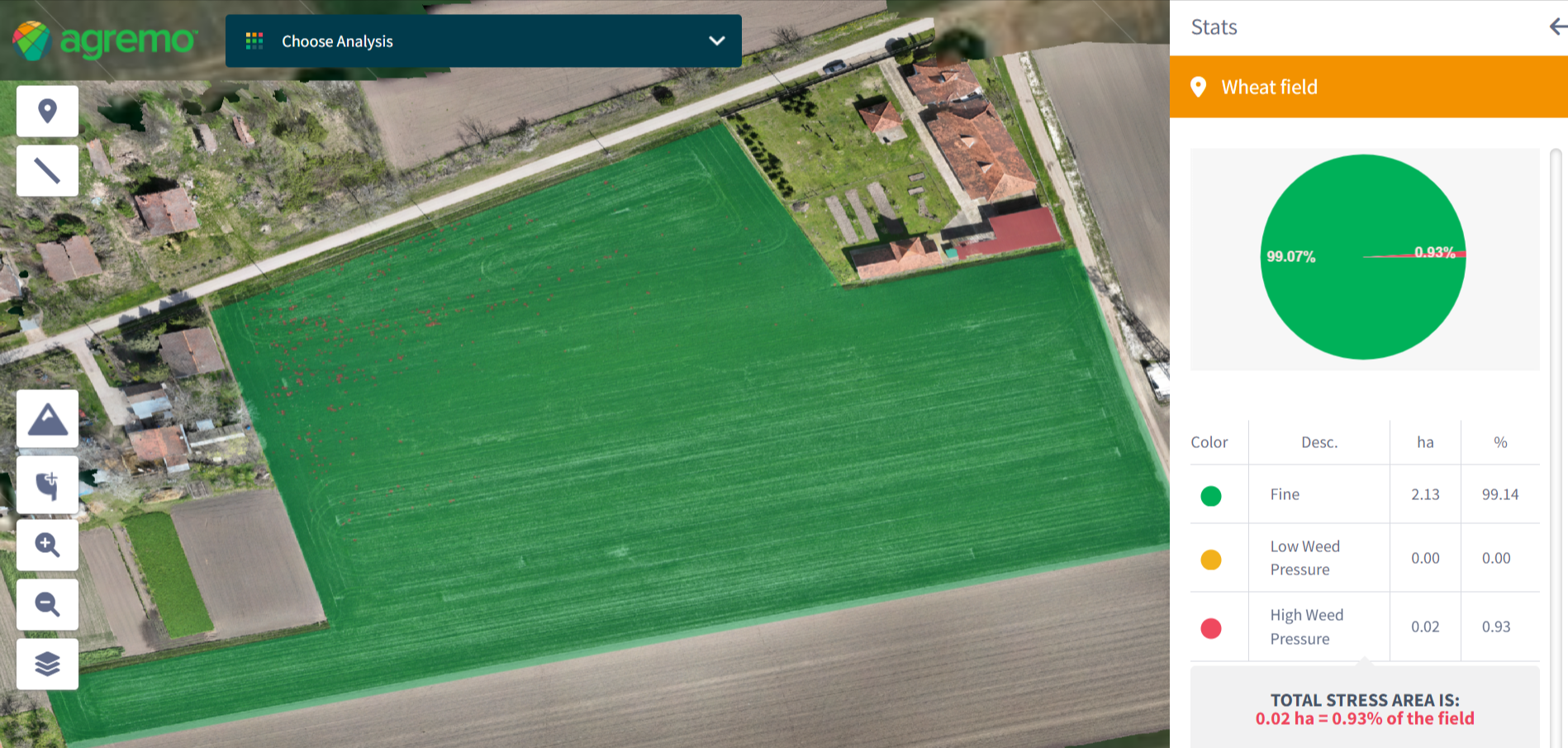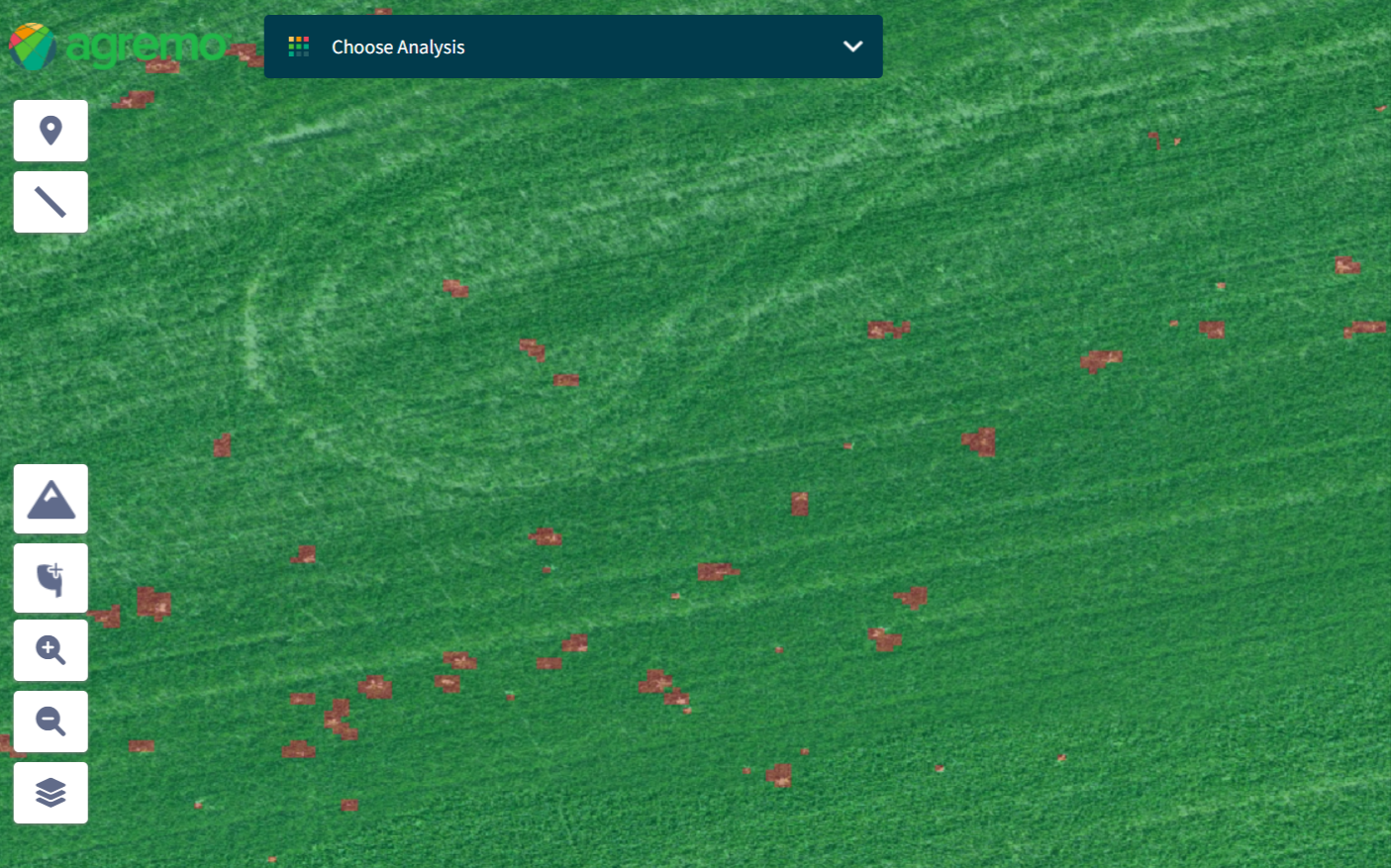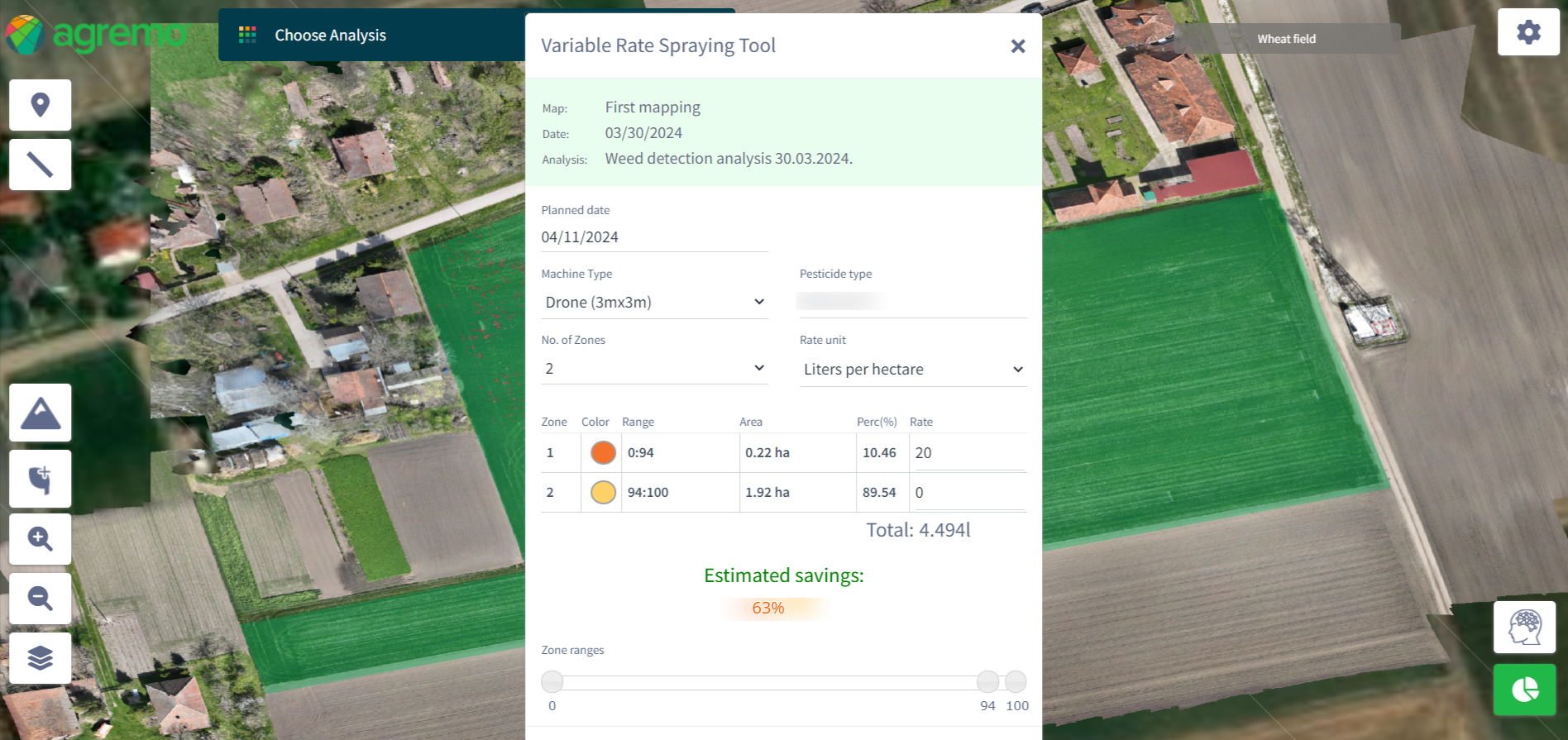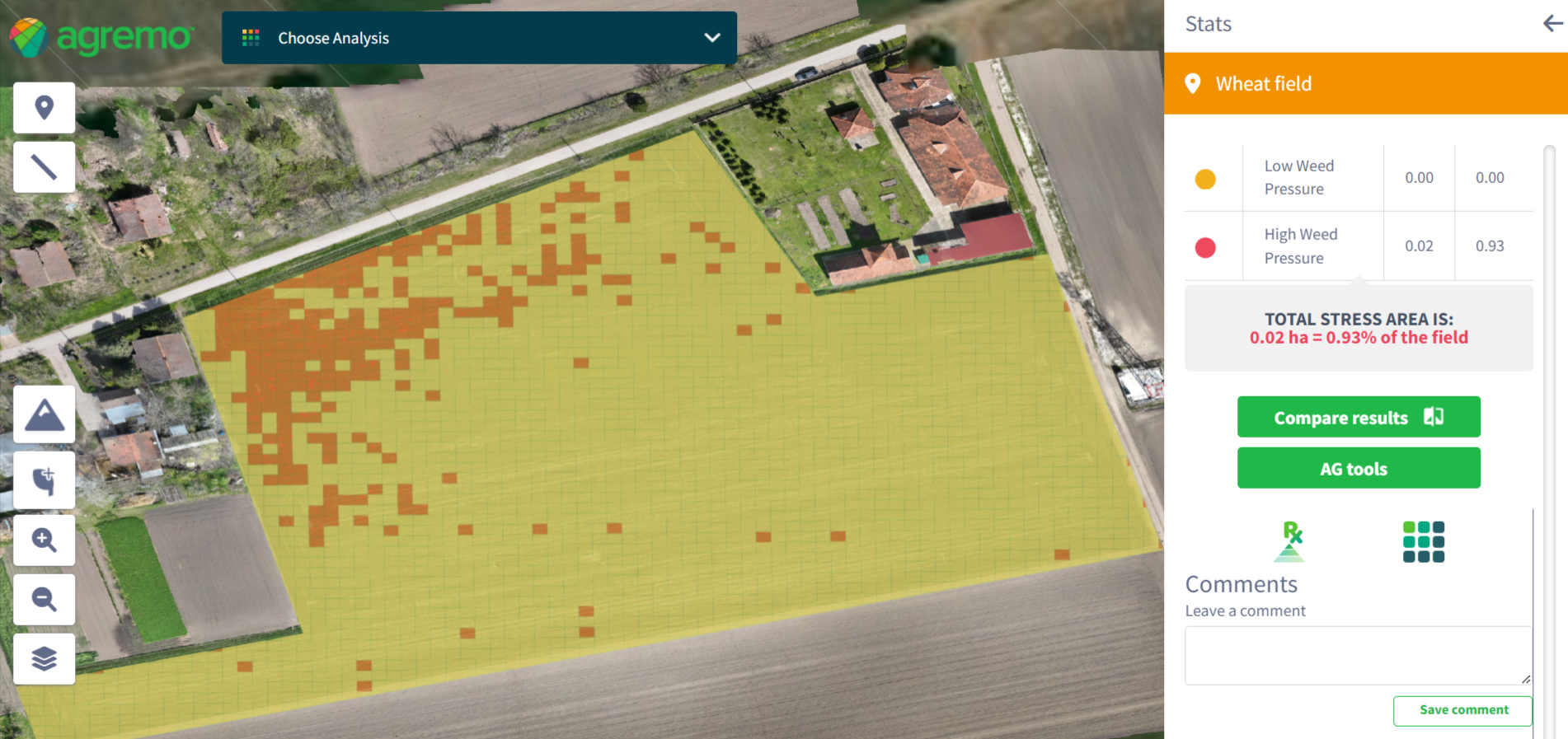Introduction
Precision spot spraying has emerged as a promising solution in enhancing agricultural efficiency. This case study explores the application of spot spraying in winter wheat fields, focusing on its ability to identify weeds in “green on green” scenarios and the financial savings it can offer over traditional flat spraying methods.

Objectives
The primary objectives of this study were to:
- Demonstrate the ability to identify weeds in “green on green” scenarios.
- Quantify the financial savings achieved by adopting spot spraying over traditional flat spraying methods.
Hypotheses
The study was based on the following hypotheses:
- Weed Identification: Canola (broadleaf weeds) can be identified in a Winter Wheat field during the growing phase.
- Cost Savings: Spot spraying can significantly reduce herbicide costs compared to traditional flat spraying.
- Accuracy: There is minimal difference between the prescribed treatment amount, that user create by Agremo’s Spraying tool, and the actual herbicide consumption in the field.
- Effectiveness: Herbicide treatment remains effective because Agremo AI can shorten the gap between mapping and spraying.
- Adoption: Demonstrating the benefits of spot spraying will encourage widespread adoption among efficiency-focused and profit-driven farmers.
Project Overview
The study took place on a Winter Wheat field in Subotica, Serbia. The field, spanning 2.15 hectares, was sown on October 20, 2023, and was in the BBCH 32 phase (stem elongation) during the study. The weed under observation was Canola (broadleaf weeds). The mapping occurred on March 30, 2024, and the spot spraying happened on April 11, 2024. Unfavorable weather conditions forced us to postpone the spraying, even though everything was technically ready for the next day.


Equipment and Methodology
The team used a DJI Mavic 3M drone for mapping and a DJI T30 drone for spraying.
The mapping drone connected to a DJI RTK station. Mapping and prescription map creation were completed on March 30, 2024, followed by spot spraying and analysis on April 11, 2024. This case study was conducted in cooperation with Ag Dron Company.
Results
The study confirmed the ability to identify weeds in “green on green” scenarios. It also showed a significant reduction in herbicide costs with spot spraying. The total herbicide usage was 15.89 liters, resulting in a total herbicide savings of 63%.

Environmental Benefits
Spot spraying offers several environmental benefits:
Reduced Chemical Usage: Spot spraying targets only the weeds, significantly reducing the amount of herbicides used. This conserves resources and minimizes the exposure of non-target plants and soil to chemicals and prevent herbicide resistance.
Minimized Environmental Impact: Using fewer chemicals reduces the risk of chemical runoff into nearby water bodies, protecting aquatic ecosystems from potential harm caused by herbicides.
Promotes Biodiversity: By selectively targeting weeds, spot spraying helps maintain the natural biodiversity of the field. Non-target plants remain unharmed, supporting a more diverse and healthy ecosystem.
Sustainable Farming: Spot spraying aligns with the principles of sustainable farming, optimizing resource usage and promoting environmental stewardship, making it a viable long-term solution for weed management.

Conclusions
The study confirmed the hypotheses and highlighted the effectiveness and efficiency of using precision agriculture techniques, particularly spot spraying, to manage weed infestations and reduce costs.
Moreover, it proved the potential for broader adoption among farmers, especially those focused on efficiency and profit.
By demonstrating the benefits of spot spraying, this case study encourages farmers to adopt this innovative technique, paving the way for a more sustainable and cost-effective future in agriculture. Furthermore, the environmental benefits underscore the value of this approach, making it not just an economically sound choice, but also an environmentally responsible one.
For further insights into the benefits of variable rate fertilization and precision agriculture, you can explore more about variable rate technology and its applications in horticultural crops for detailed studies on nutrient management and optimization. Additionally, learn more about how precision agriculture improves resource management on the U.S. Government Accountability Office site. For insights on the efficiency and benefits of precision spot spraying, visit UGA Precision Ag Extension.
We demonstrated this use case in our previous Drones to Dollars webinar. To see it in action, watch the webinar recording.

